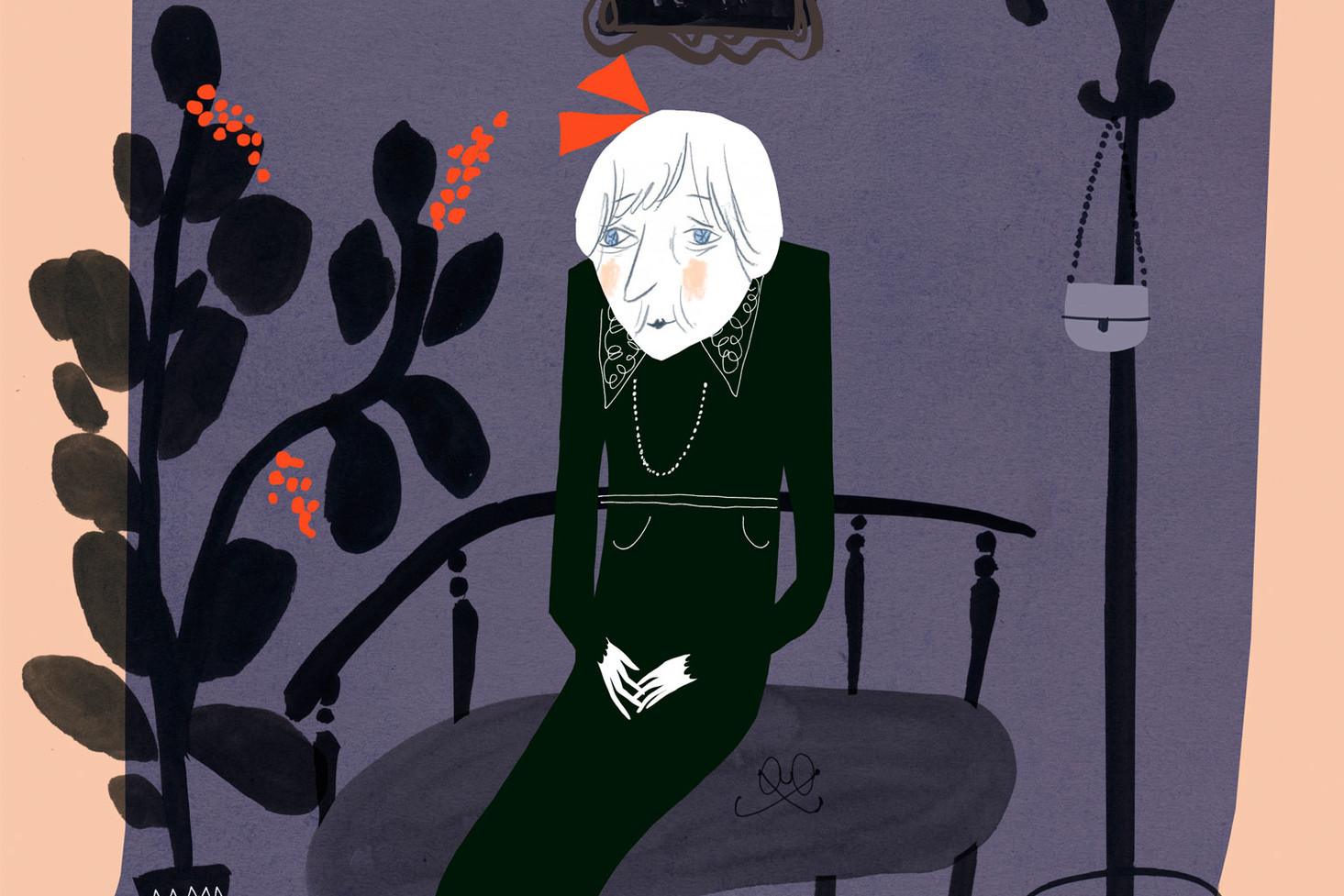The Vanishing

Kirjat - EB 13
The Vanishing
By 2050, nearly 115 million people in the world will have Alzheimer’s or some other form of dementia. But when our memories fade, what do we become – a shadow of our old selves or somebody new?
After losing her grandmother to Alzheimer’s, writer Anu Silfverberg travels to see the future of dementia care. In the Netherlands, a new kind of care home lets patients live in their own past. Here you’ll find gated gardens and a pub for the demented, along with a stylized class system designed by a team of consultants. A surprise lesson: dementia isn’t a walking death after all. It’s another way of living.
”MARJOLEIN DE VISSER makes a sweep of her hand, takes in the plush sofa, the divan, the old man standing beside the white background.
‘This home is aimed at people used to a life of luxury,’ de Visser explains with a smile. A social worker, she is a spontaneous woman in her thirties, tall and healthy-looking.
A group of journalists loiters in the doorway. They give polite nods. The room is cosy, a reproduction of a bygone world. The parquet floor is waxed to a shine. Roses stand in porcelain vases.
Next de Visser points to the partition wall dividing the room and covered in gold-relief patterned wallpaper.
‘As you can see, in this home for the upper classes, the kitchen is out of sight, hidden behind a wall,’ she explains. ‘Residents here aren’t used to seeing their food prepared. And, as you can see, they are dressed very well indeed.’
De Visser walks up to an old woman on a red divan and holds out her hand. The woman’s clothes are certainly stylish: a crisp black dress, thin-denier tights and a fine necklace. She seems delighted to take the younger woman’s hand, and tries to stand up. The sound comes straight from her diaphragm.
‘Mmmaa!’ she says. ‘Mmmaa!’
WELCOME to the future of humanity. It is located in the Hogewey home for senior citizens in Weesp, Holland, where a visit from a group of international journalists is just getting started. Hogewey is a new type of care home where sufferers of Alzheimer’s can live in a ‘village’ designed especially for them and mirroring reality.
”And who decides what reality is?
The consulting company Motivaction.
Based on a broad spectrum of data, the company has put together a customer segment analysis dividing people into several principal categories. At present, Hogewey offers group accommodation for seven different groups and lifestyles. There’s the traditional home and the urban home, the Christian home and the cosy home, the upper-class home and the cultural home. And in a throwback to Holland’s imperial past, the Indonesian home.
Here people believe the lives of dementia patients are easier if their environment recalls their earlier surroundings. This involves providing the patients with their own interior design and customs, their favourite TV shows, the newspaper aimed at their demographic. Their favourite food is prepared either communally (the urban home) or behind a wall (the upper-class home).
Since few people would describe their lifestyle as ‘hospital-like’, the staff here wear everyday clothes and almost every indication of a care facility has been removed. Only a few hints of institutional life are visible: the doorways have no thresholds, and nearly every room has a clock on the wall.

